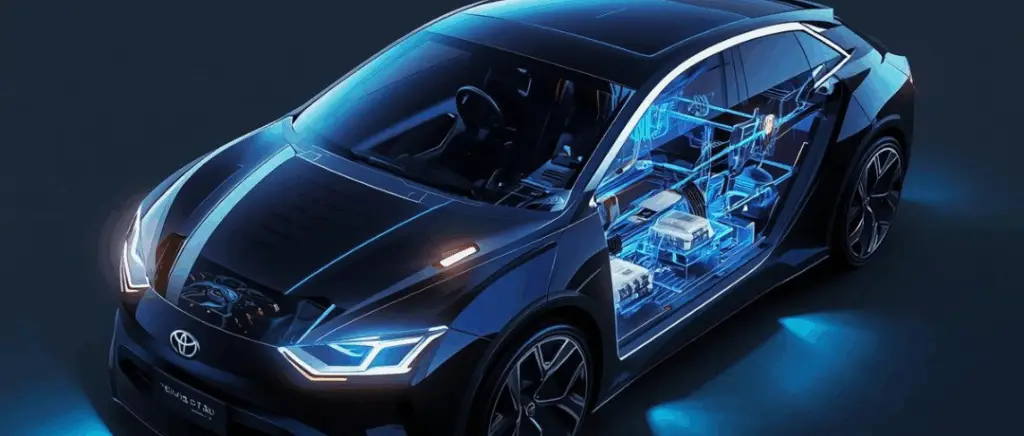Why invest in a recharging point?
Most self-employed professionals are nomadic and have to deal with the cost of travel (mileage), but also the time spent travelling. Whether you're an architect working on several sites, a nurse making house calls or a plumber specialising in urgent repairs, you have to deal with the many constraints inherent in mobility. In this context, being able to rely on your electric vehicle is essential. It must provide theautonomy sufficient to avoid any business interruption that could be detrimental to both your customers and your schedule. The choice of recharging method is therefore crucial.
Cover a wide range of journeys
Some liberal professions are built entirely around mobility. Self-employed nurses, for example, visit on average 35 patients per day. To guarantee efficiency and productivity, it is essential to organise routes as efficiently as possible.
One way of reducing the number of kilometres travelled and the frequency of recharging is to establish zoning. This makes it possible to rationalising travel by limiting themselves to one area, depending on visiting times. But it's not always easy to implement, depending on the specifics of the patient base, the priorities linked to the very nature of the care and, of course, unforeseen circumstances.
In urban areas with good public transport links, it is easier to reduce car journey times by relying on other modes of transport. This is not the case in isolated rural areas, where self-employed professionals can only rely on their cars and often have to travel more than a hundred kilometres a day.
Save time
So it's easy to see why it's so important to acquire a recharging infrastructure. For you, it is inconceivable to waste time looking for a public charging point or to modify your itineraries to the detriment of your customers or patients. Recharging your vehicle at work or at home, whenever you want and without constraints, is essential for optimise your productivity and offer the best quality of service to your customers/patients.
The self-employed: two alternatives for installing a recharging point
As a self-employed professional, you can choose to install an electric vehicle charging point at your workplace (office, practice) or at home. Each solution has its advantages and disadvantages.
The installation of an IRVE (Infrastructure de Recharge pour Véhicule Électrique) at your workplace
This is a wise solution if you receive clients or patients at your practice or offices. However, you will need a car park or parking area. Not only will you have permanent access to a dedicated charging point for your business electric vehicle, but you will also be able to monetise your equipment when you're not using it. By making your charging point accessible to the public (visitors, patients or customers, employees), you will be able to charge for recharging or offer it free of charge, depending on your objectives.
However, opening your charging point to the public brings with it management (supervision) and billing constraints.
Installing a home charging point
To date, government grants for self-employed professionals planning to install a recharging point at their home on a professional basis have not been renewed. However, there's nothing to stop you from installing a charging point as a private individual, which will enable you to obtain aid to finance your project. In particular, you will benefit from :
- from VAT rate reduced to 5.5 % (instead of 20 %), for work to improve the energy performance of a dwelling (article 278-0 bis A of the General Tax Code). Since 2023, this reduction has been granted regardless of the year in which the property was built.
- from tax credits for the installation of charging points The credit amounts to 75 % of the cost of the equipment, up to a maximum of €500 excluding VAT per item. It is limited to the installation of a single charge point per home for a single person, or two charge points for a couple. This tax credit is available to anyone who is resident in France for tax purposes, whether they own, rent or occupy the property free of charge.
Good to know If you live in a condominium, the right to a plug (i.e. the right to install a recharging point at your own expense) is not subject to a vote at the General Meeting. However, the request must be notified by letter to the managing agent 3 months before the planned date of the work. The syndic cannot refuse to grant a co-owner's right to a charging point, unless there is a technical obstacle that makes it impossible to deploy the charging point, or if a collective charging solution is already in place or planned. In addition, in a collective car park, it is important to ensure that there is sufficient electrical power to cover the installation of a charging point.
Putting a price tag on your project
Whether you decide to install a recharging point at home as a private individual or at your place of work as a self-employed professional, you need to take the time to find out what you need to do.estimate your project. This means choosing the right equipment. An oversized terminal will generate unnecessary costs and will pay for itself less quickly. On the other hand, incomplete equipment will require upgrading at a later date.
To define the scope of your needs, you need to think about your expectations and the future use of your charging infrastructure. Start by asking yourself the right questions:
- What is my average commuting time?
- How many kilometres do I have to cover each day?
- Is my activity continuous or discontinuous?
- Will I have time to recharge my vehicle during my working day? If so, how much time could I devote to recharging?
- Are there any free recharging stations on my usual routes?
- Is the electrical installation in my home/cabinet new/standard?
- Will I have the time to manage the recharging myself?
You also need to consider your environment. You won't choose the same charging point if your place of work is mainly in the city centre, or if you frequently travel to suburban or rural areas.
Depending on the answers you get, you'll have a clearer idea of the type of bollard best suited to your requirements. Depending on the model, the selection criteria may vary. In particular, you need to pay close attention to the power of the equipment, the estimated recharging time and options such as access management and billing for energy consumed.
The first part of the quote: the charging point
What wattage should I choose?
We are looking here at wall-mounted charging points, excluding reinforced sockets which are not really suited to charging professional electric vehicles intended for long and/or frequent journeys, and to monetisation in the context of a publicly accessible charging point.
Charging stations come in a range of power ratings: 7.4 kW, 11 kW and 22 kW. Beyond that, the term "fast charging" is used. These are mainly public network charging points (totems) with a power rating of up to 350 kW.
For what autonomy?
Selecting the right wattage is essential, as it determines the charging time based on the desired range.
For example, an 11 kW charging point will give you a range of 60 to 75 km for an hour's charge (which varies depending on the model of electric vehicle). But you also need to take into account the vehicle's charging capacity. If it is fitted with a battery of 7.4 kW, the recharging speed will be limited and will not exceed that of a 7.4 kW terminal, even if the installed terminal has a higher power rating.
Range is double for a 22 kW charging point (around 150 km for an hour's charge).
To find out which bollard wattage is right for your needs, you need to define in advance theautonomy you need. Here's an example of how this works in practice, for a self-employed doctor who only visits patients and travels an average of 80 km a day. In the course of his work, this professional travels from Monday to Saturday, covering an average weekly distance of 480 km. If he opts for a 7.4 kW charger, he will get the range he needs by recharging for two hours a day. That's more than enough power to cover his needs.
Average price: between €700 excluding VAT and €900 excluding VAT for a 7.4 kW terminal, depending on the model and brand.
Second part of the quote: installation of the bollard
Contrary to popular belief, the charging point itself is not necessarily the biggest item of expenditure when deploying a charging infrastructure. You also need to take into account the price of installation. This depends on several factors, mainly :
- any work required to bring the electrical system up to standard: the installation of a recharging point must be perfectly in line with the NF 15-100 standard. If your electrical system is obsolete or if the earth connection is faulty (missing or resistance greater than 100 Ohms), the electrician will have to carry out the modifications, which will incur additional costs.
- the distance between the terminal and the switchboard: a long distance may mean that the terminal has to be replaced. civil engineering works (this is rarely the case for a charging point installed in a garage).
Average price: between €800 and €1,500 excluding VAT.
Did you know? To install a recharging point with a power rating of more than 3.7 kW, you need to call on the services of a qualified electrician. IRVE certified electricianqualified to install charging points for electric vehicles.
Our Beev experts will propose a package tailored to your needs and your projects.
Apply now!
Third part of the quote: options and associated services
If you are planning to open your terminal to the public and to charge for recharging for certain categories of visitor (customers or patients), you should opt for a terminal equipped with a communication system (RFID) that will allow you to control it remotely. This option will not be necessary for a terminal installed at home and dedicated to your own use.
Don't forget to include the cost of the maintenance contract, which includes an annual inspection and repairs in the event of a malfunction.
Price: around €250 per year for the supervision tool and the same amount for the maintenance contract.
Beev: from decision support to quotations
Are you lost between the different offers on the market? You don't know which charging station to choose and how to find an approved IRVE installer? Beev can help a turnkey service and 100 free % to find and install your charging point. A few simple steps are all it takes to make your project a reality. We'll be with you every step of the way to guarantee you the best prices and the best quality, thanks to :
- dedicated assistance to help you select the right terminal for your needs and objectives ;
- Put you in touch with an approved IRVE installer near you and make an appointment;
- preparing applications for government grants and subsidies (where applicable);
- a range of optional services, such as the billing tool (supervision) and the maintenance contract.
Would you like a free, no-obligation quote to estimate the cost of installing a recharging point as a self-employed professional? Choose your equipmentor make an appointment with one of our advisers for rapid home installation within 10 working days.
If you would like to find out more aboutsupport for the installation of charging points for businesses in 2024For more information, see our article on this subject.
































